Abstract
The hydromechanics of spirilla locomotion is analyzed by considering the balance of both rectilinear and angular momenta of the surrounding viscous fluid which is otherwise at rest. The physical model of Spirillum adopted for the present analysis consists of a rigid helical body with flagella attached to both ends of the helix. The motion is supposed to be activated first by the polar flagella, both rotating in the same sense, thus causing the helical body to rotate in the opposite sense in angular recoil, which in turn pushes the body forward in response to the balance of linear momentum of the surrounding fluid. The sweeping back of the polar flagella during forward motion is ascribed to a certain bending flexibility of the flagella and of their conjunction with the body. Based on this model some quantitative results for Spirillum movement are predicted, and are found to be consistent with existing experimental data.
Full text
PDF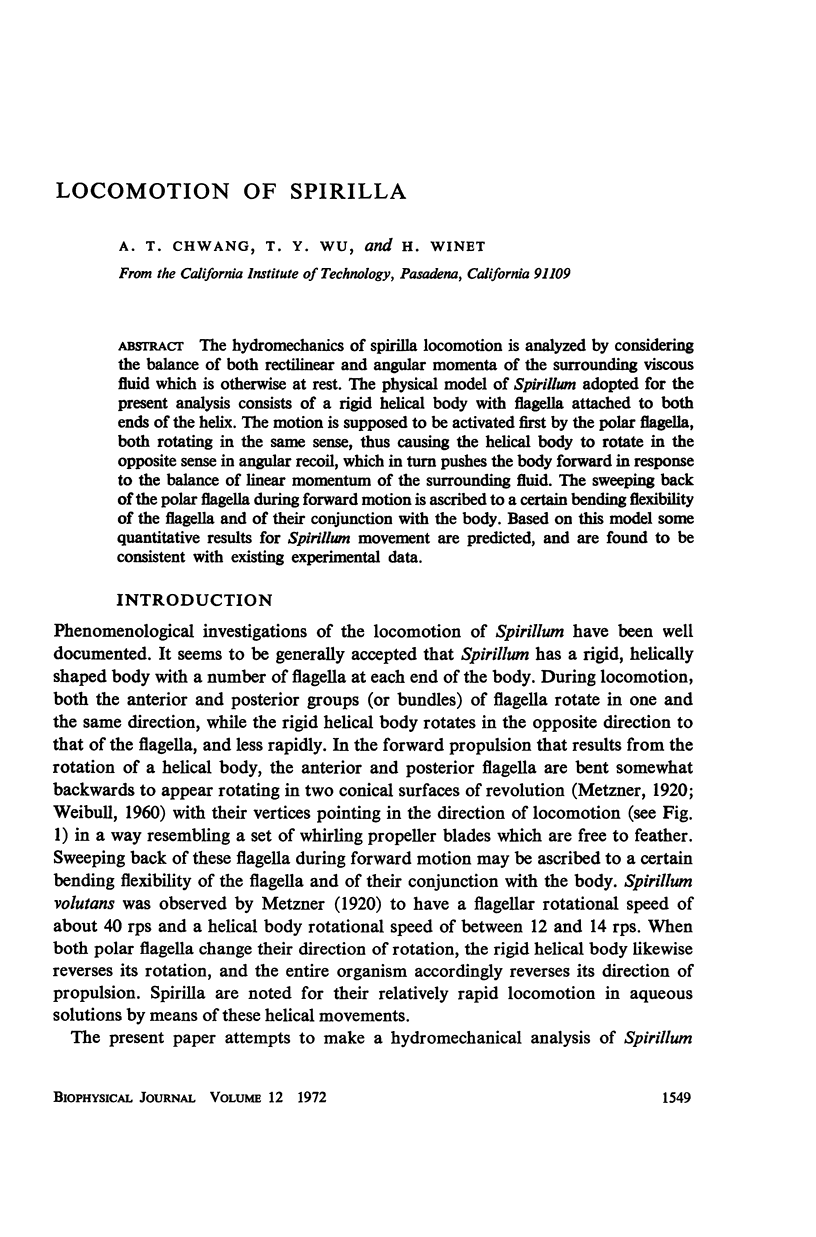

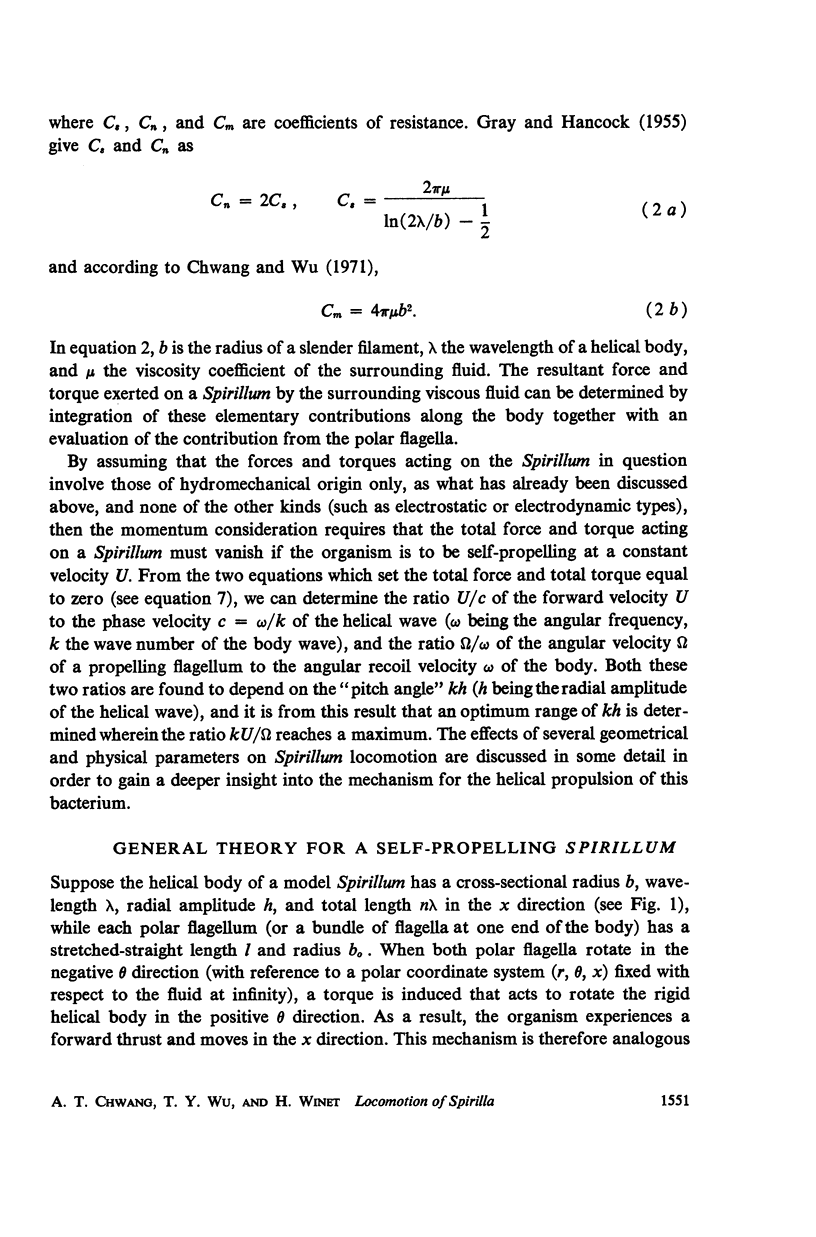
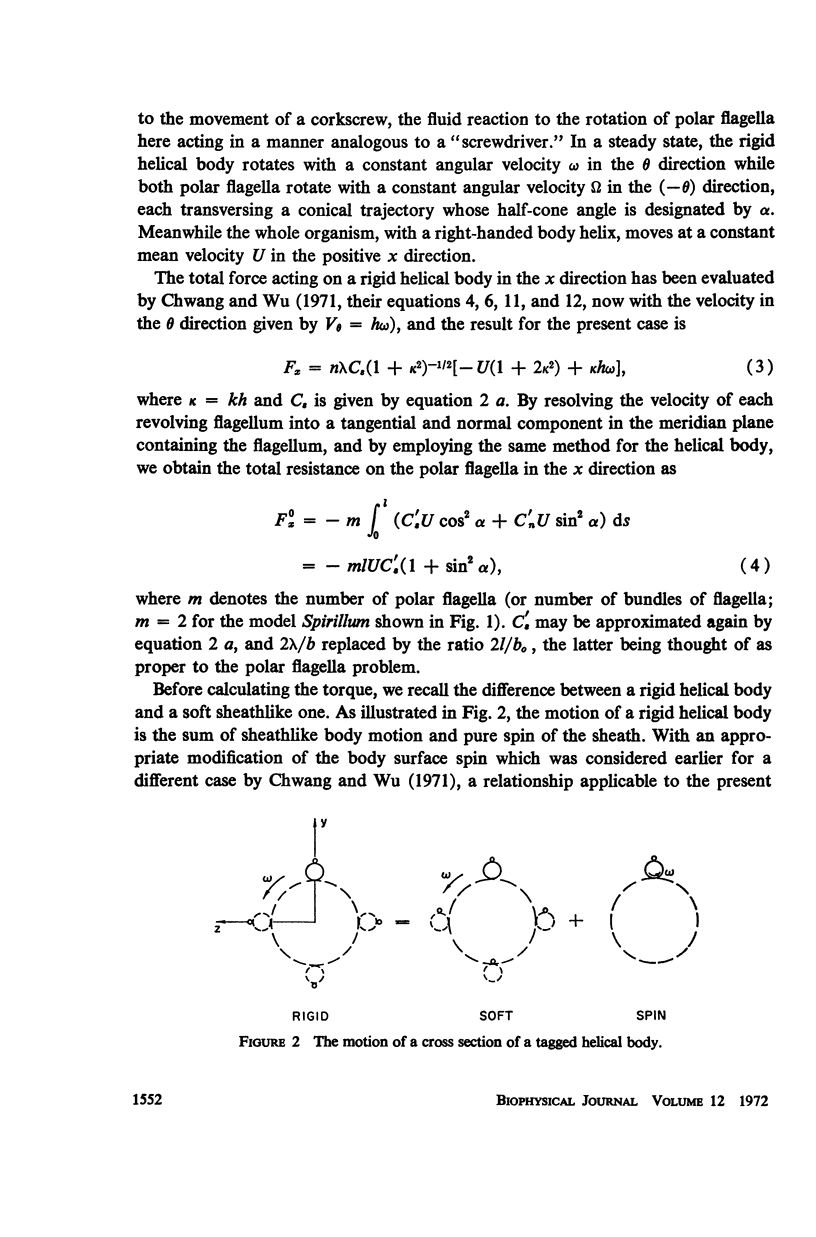
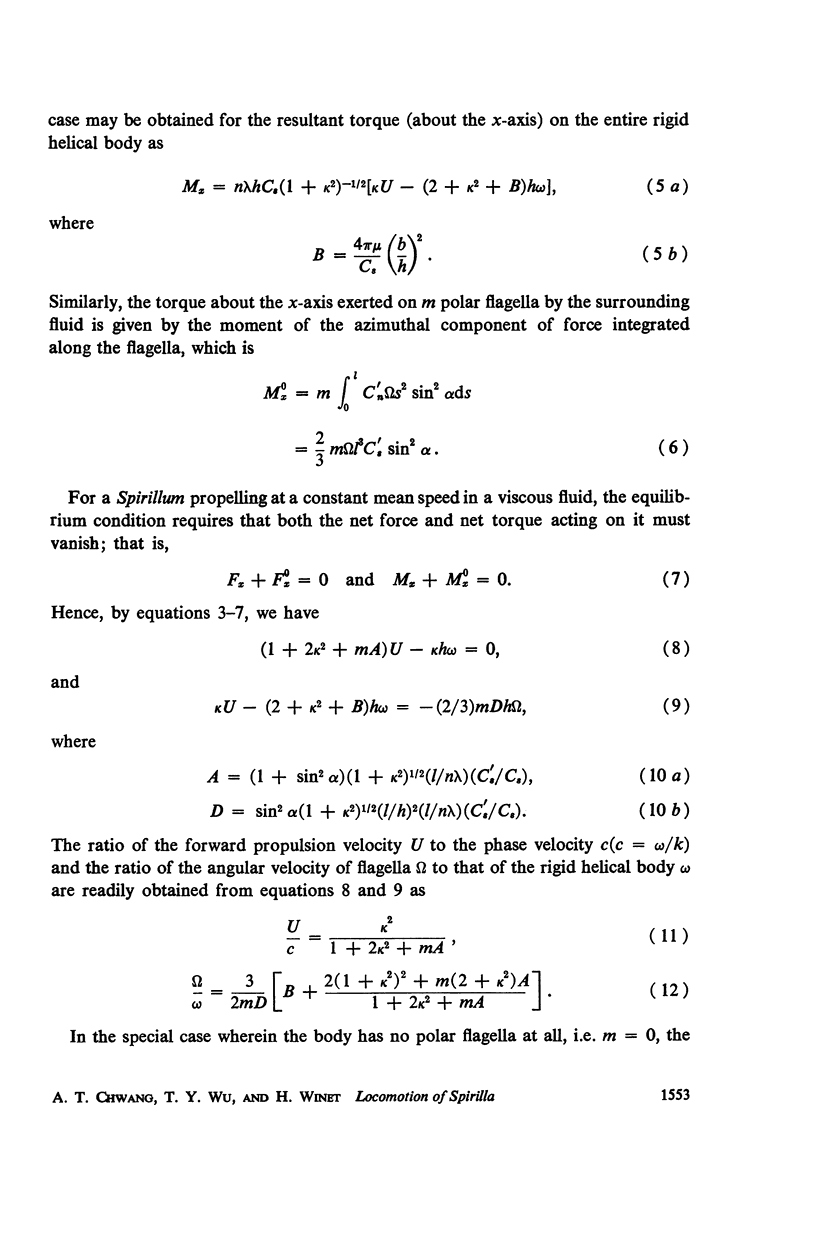
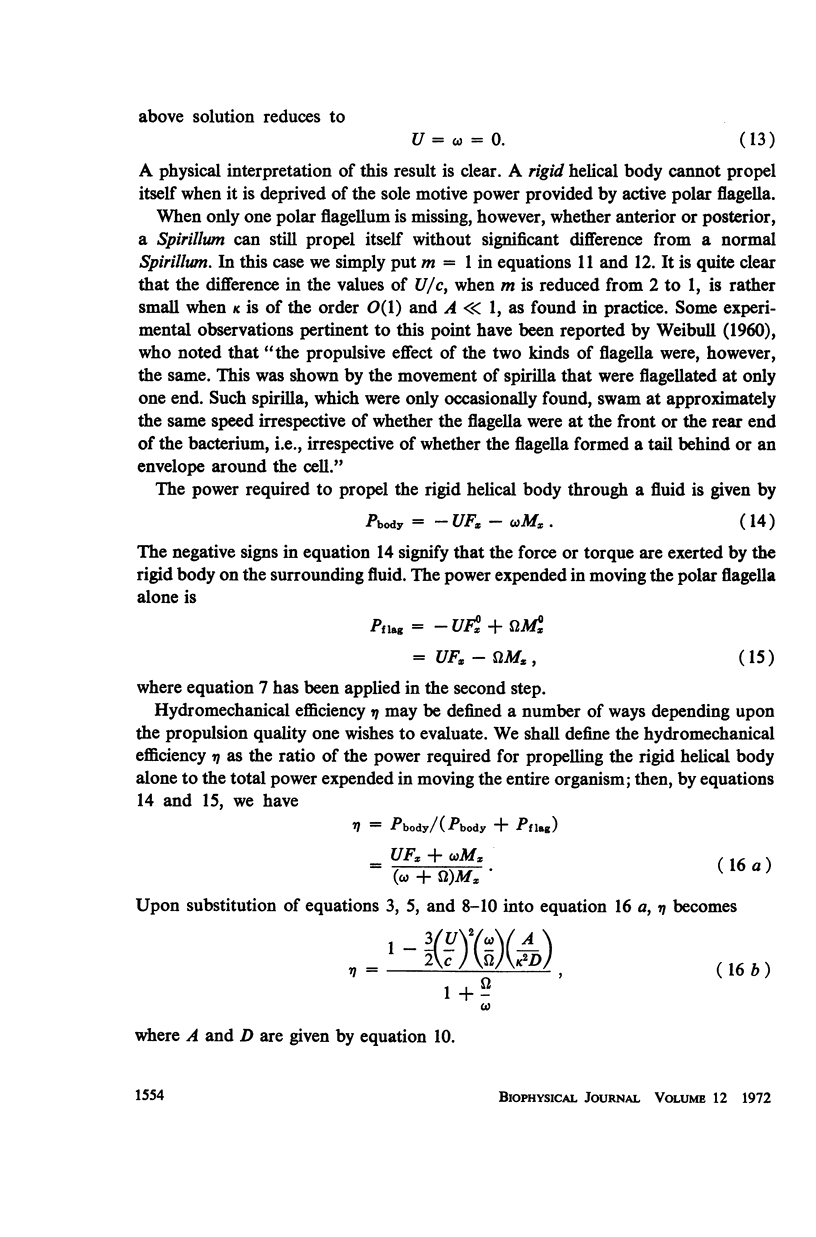
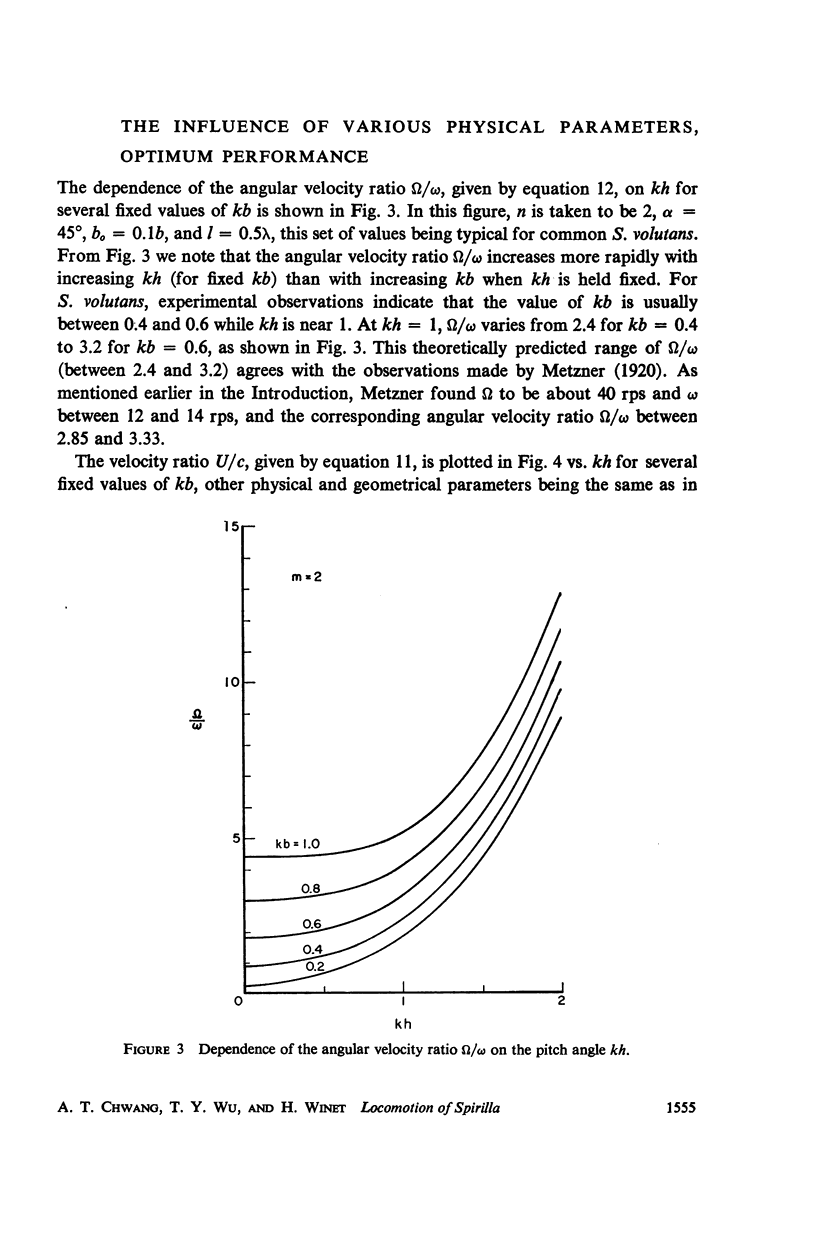
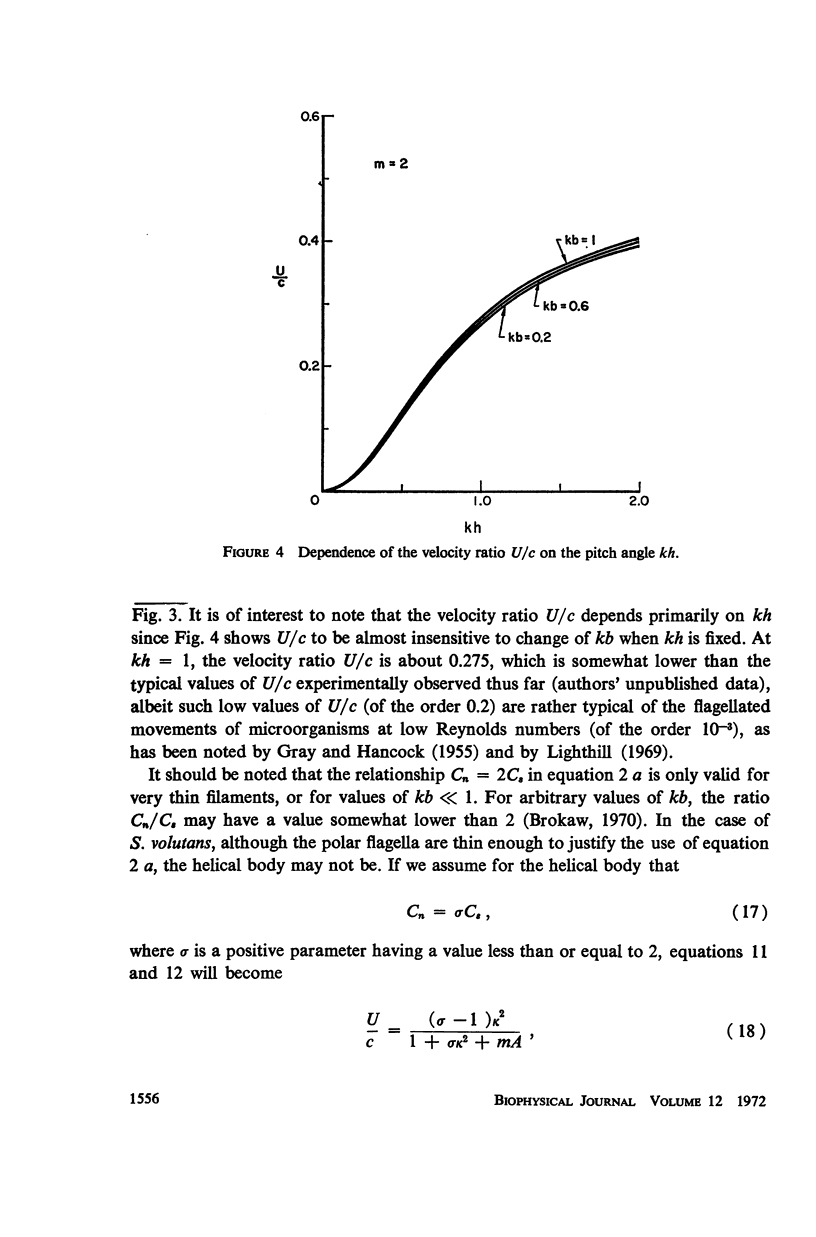
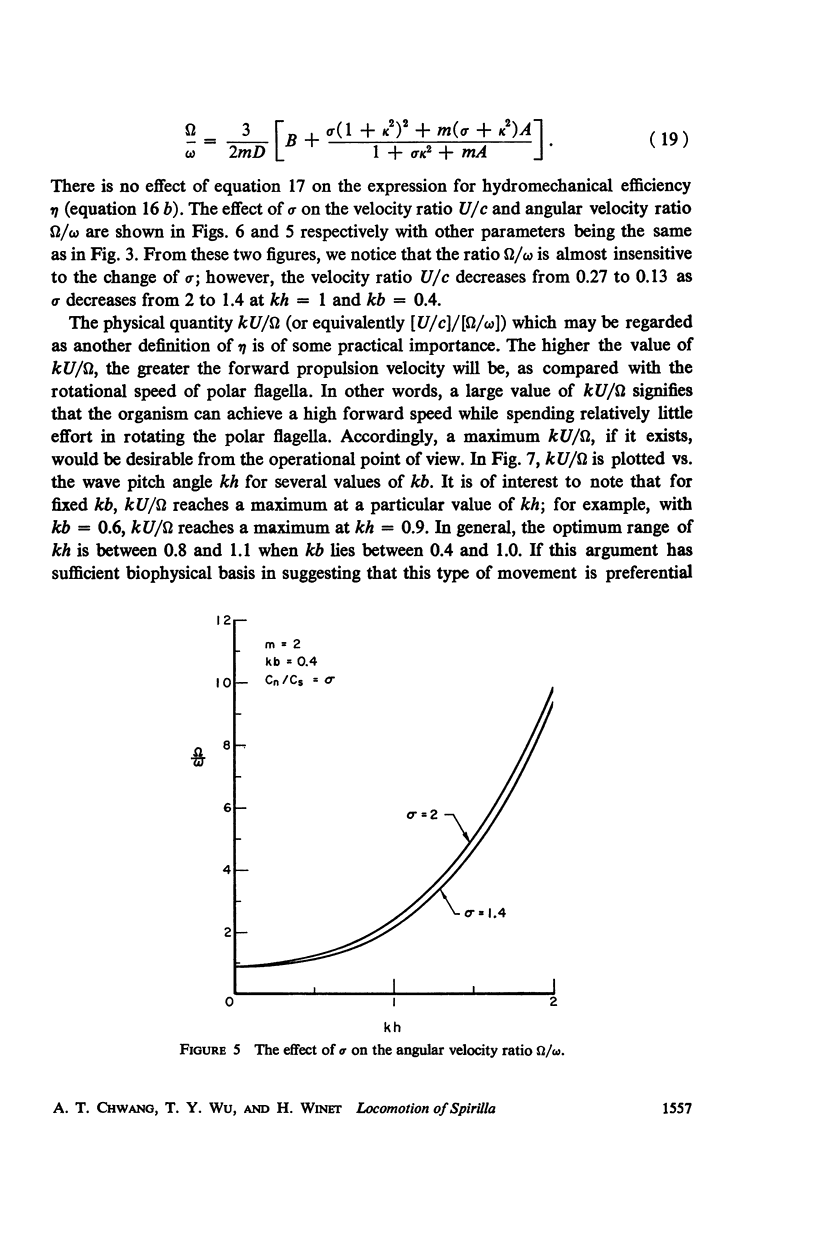
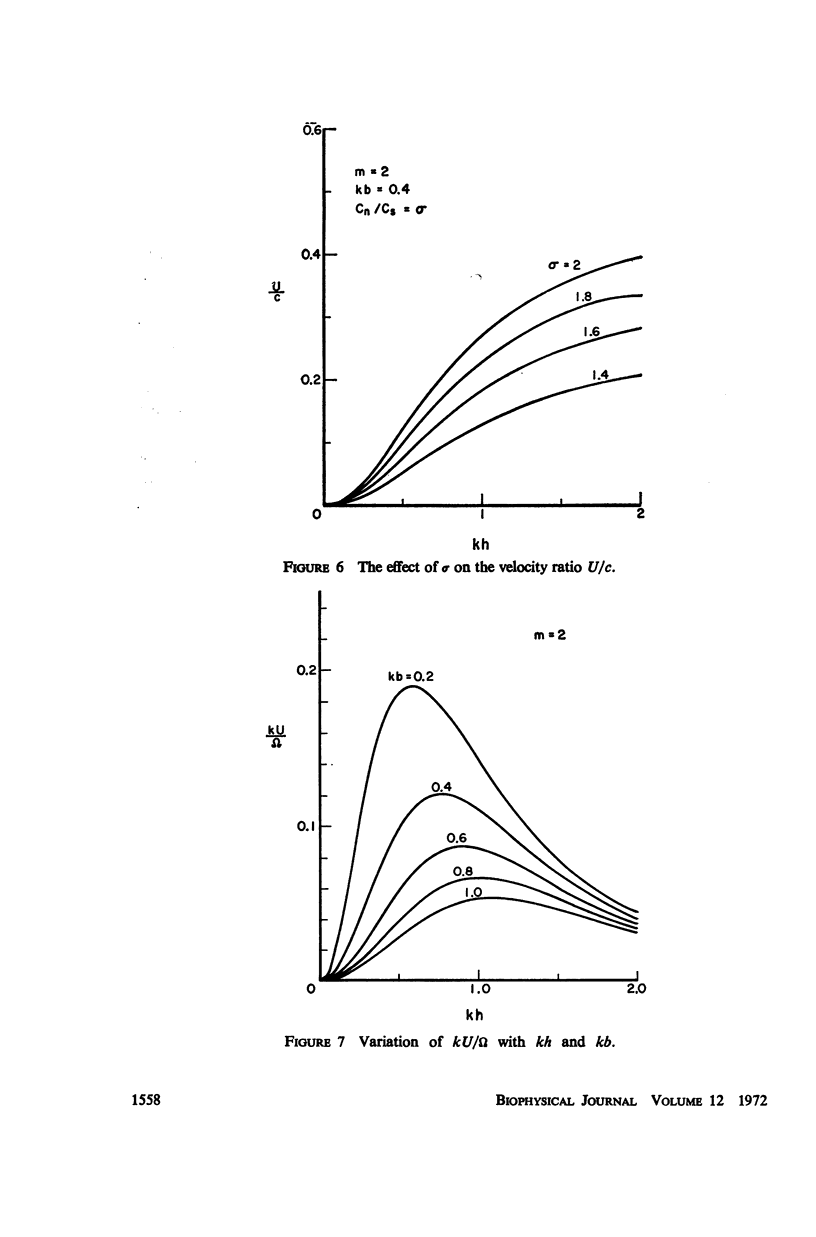
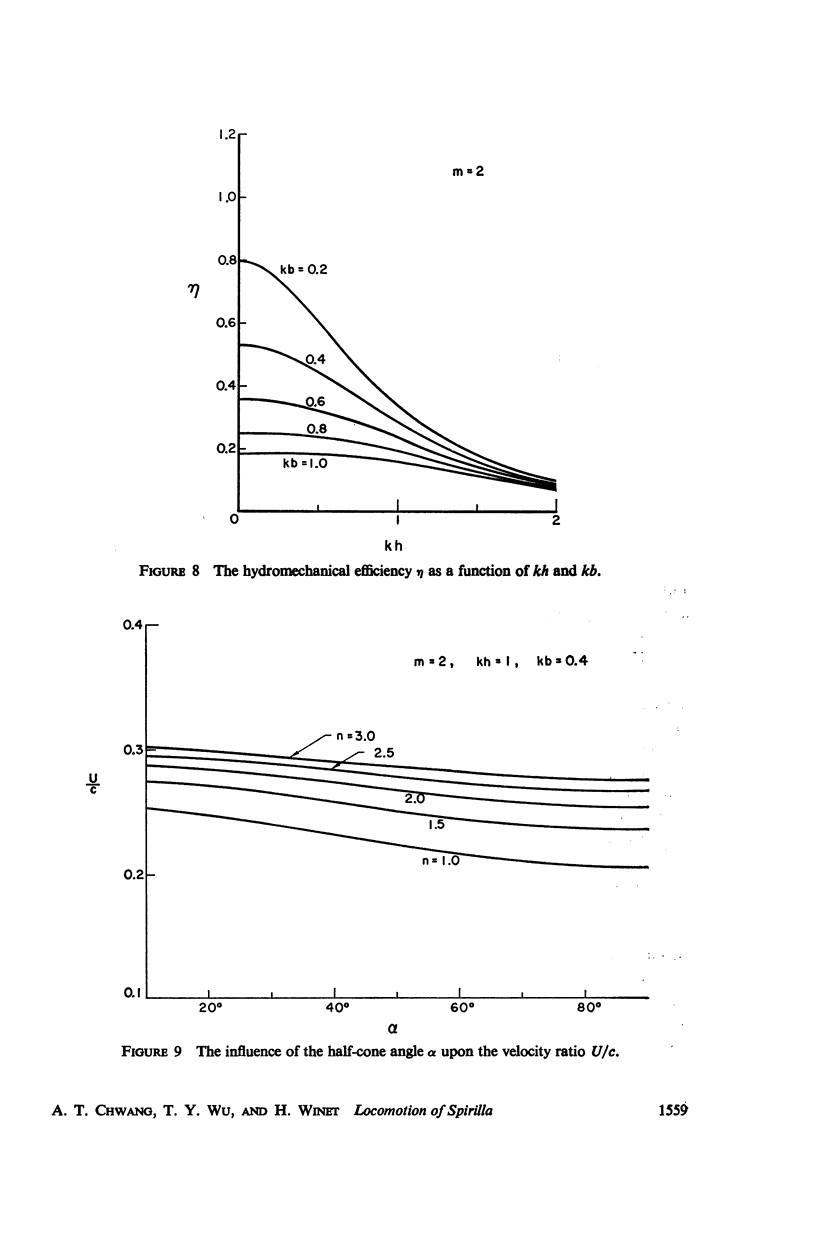

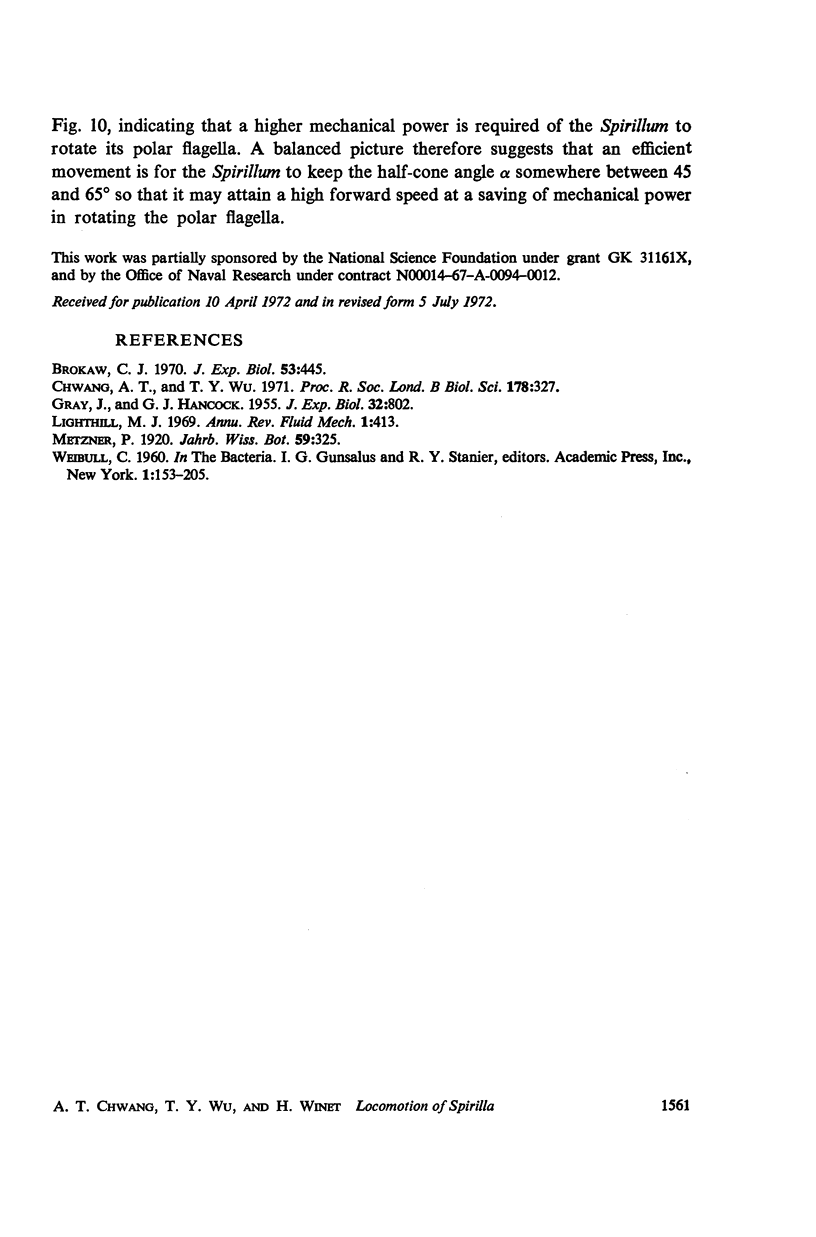
Selected References
These references are in PubMed. This may not be the complete list of references from this article.
- Brokaw C. J. Bending moments in free-swimming flagella. J Exp Biol. 1970 Oct;53(2):445–464. doi: 10.1242/jeb.53.2.445. [DOI] [PubMed] [Google Scholar]
- Chwang A. T., Wu T. Y. A note on the helical movement of micro-organisms. Proc R Soc Lond B Biol Sci. 1971 Aug 3;178(1052):327–346. doi: 10.1098/rspb.1971.0068. [DOI] [PubMed] [Google Scholar]


